
How to Use SD-CARD-READER-2PINS: Examples, Pinouts, and Specs
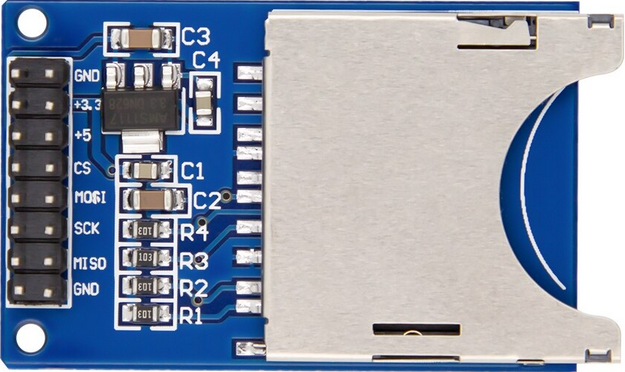
 Design with SD-CARD-READER-2PINS in Cirkit Designer
Design with SD-CARD-READER-2PINS in Cirkit DesignerIntroduction
The SD-CARD-READER-2PINS is a compact electronic device designed to interface with SD (Secure Digital) cards, enabling read and write operations. This component is commonly used in embedded systems, such as digital cameras, smartphones, and DIY electronics projects, including those involving Arduino and Raspberry Pi platforms. It allows for the storage and retrieval of data such as sensor readings, images, and configuration files.
Explore Projects Built with SD-CARD-READER-2PINS
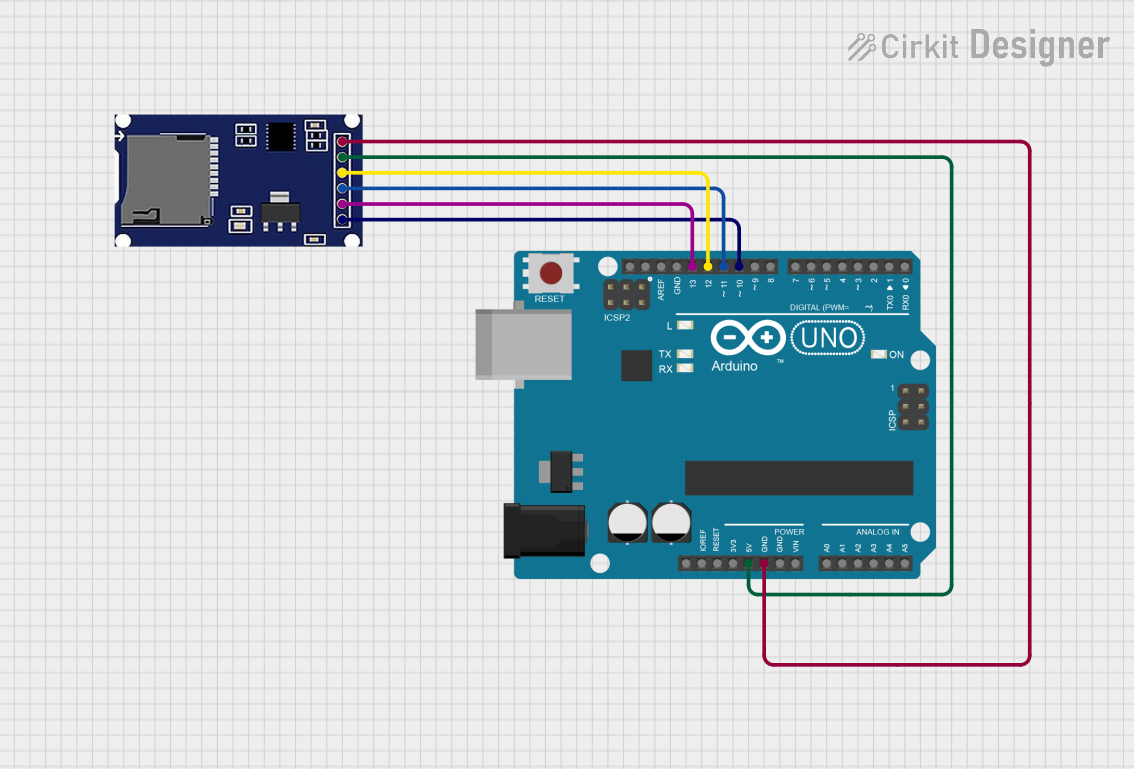
 Open Project in Cirkit Designer
Open Project in Cirkit Designer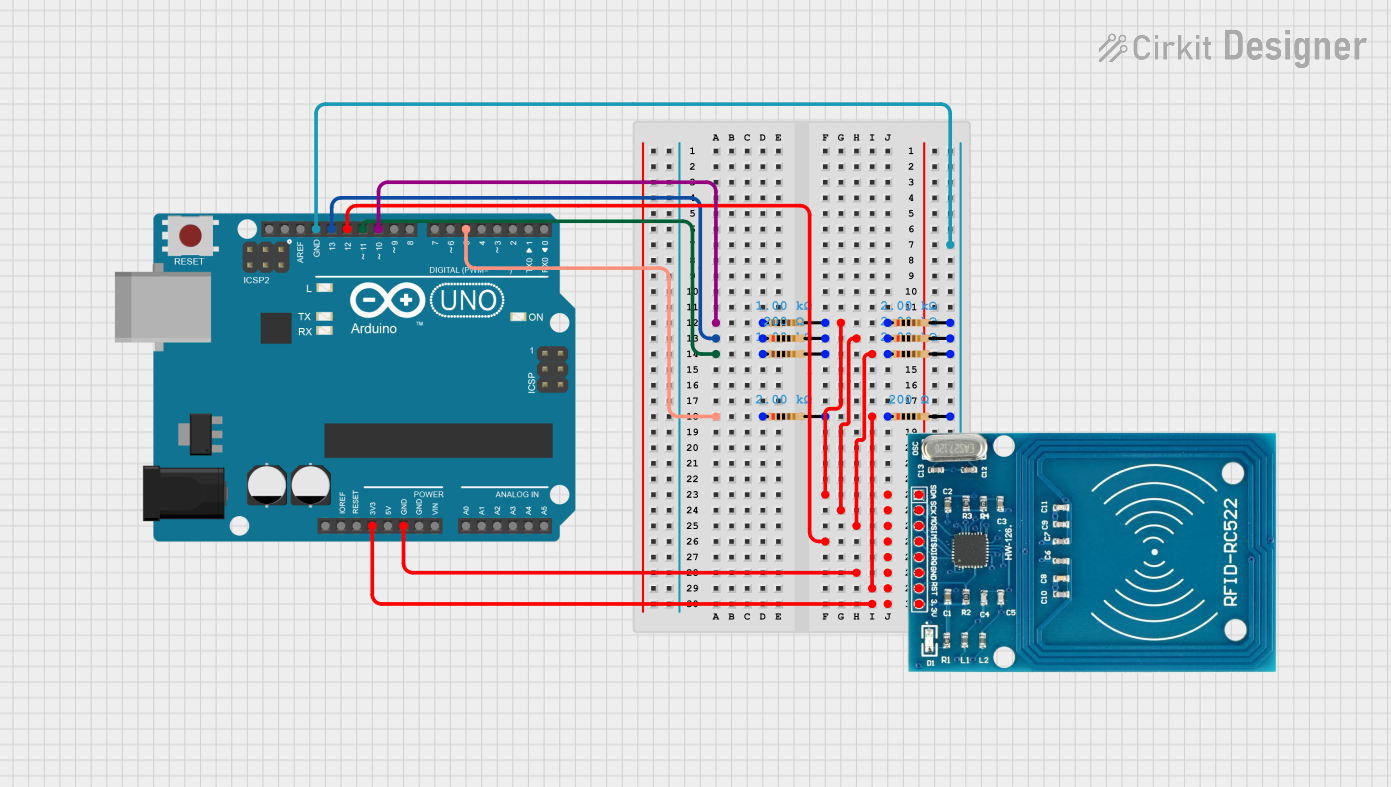
 Open Project in Cirkit Designer
Open Project in Cirkit Designer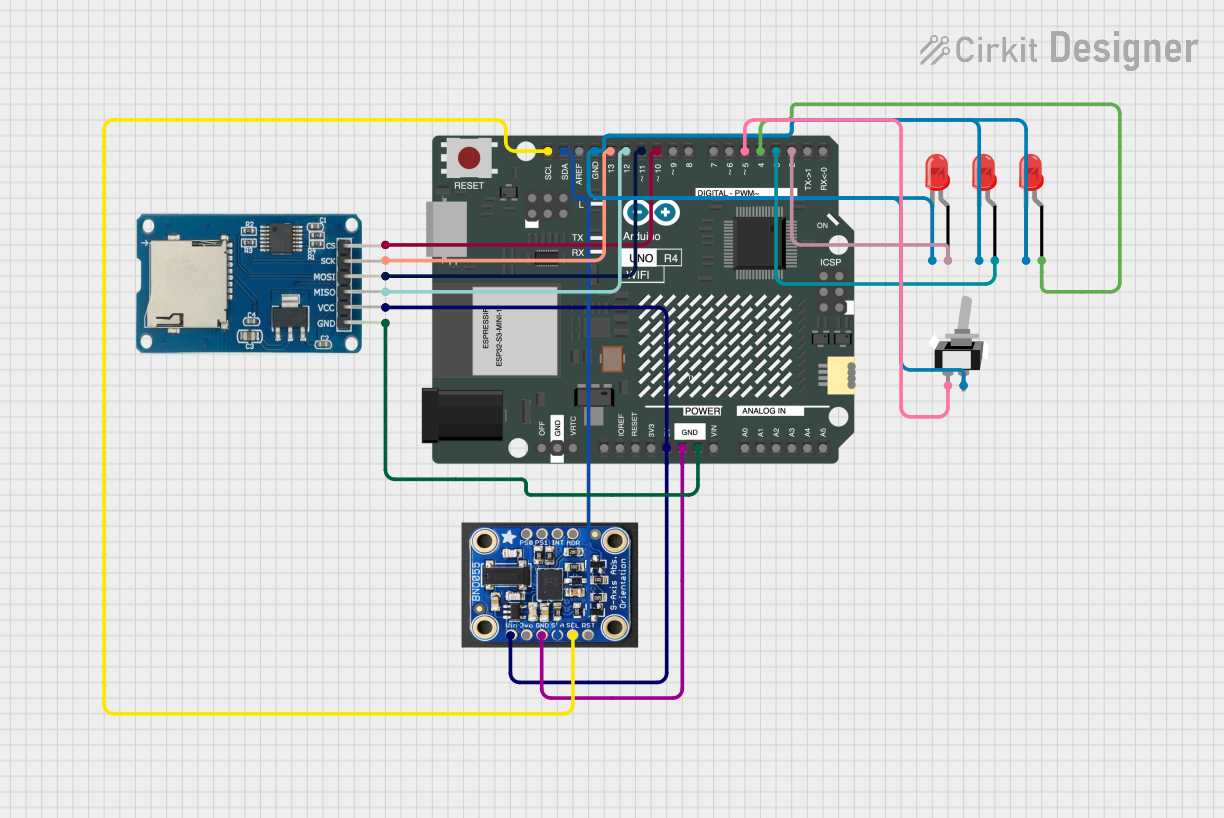
 Open Project in Cirkit Designer
Open Project in Cirkit Designer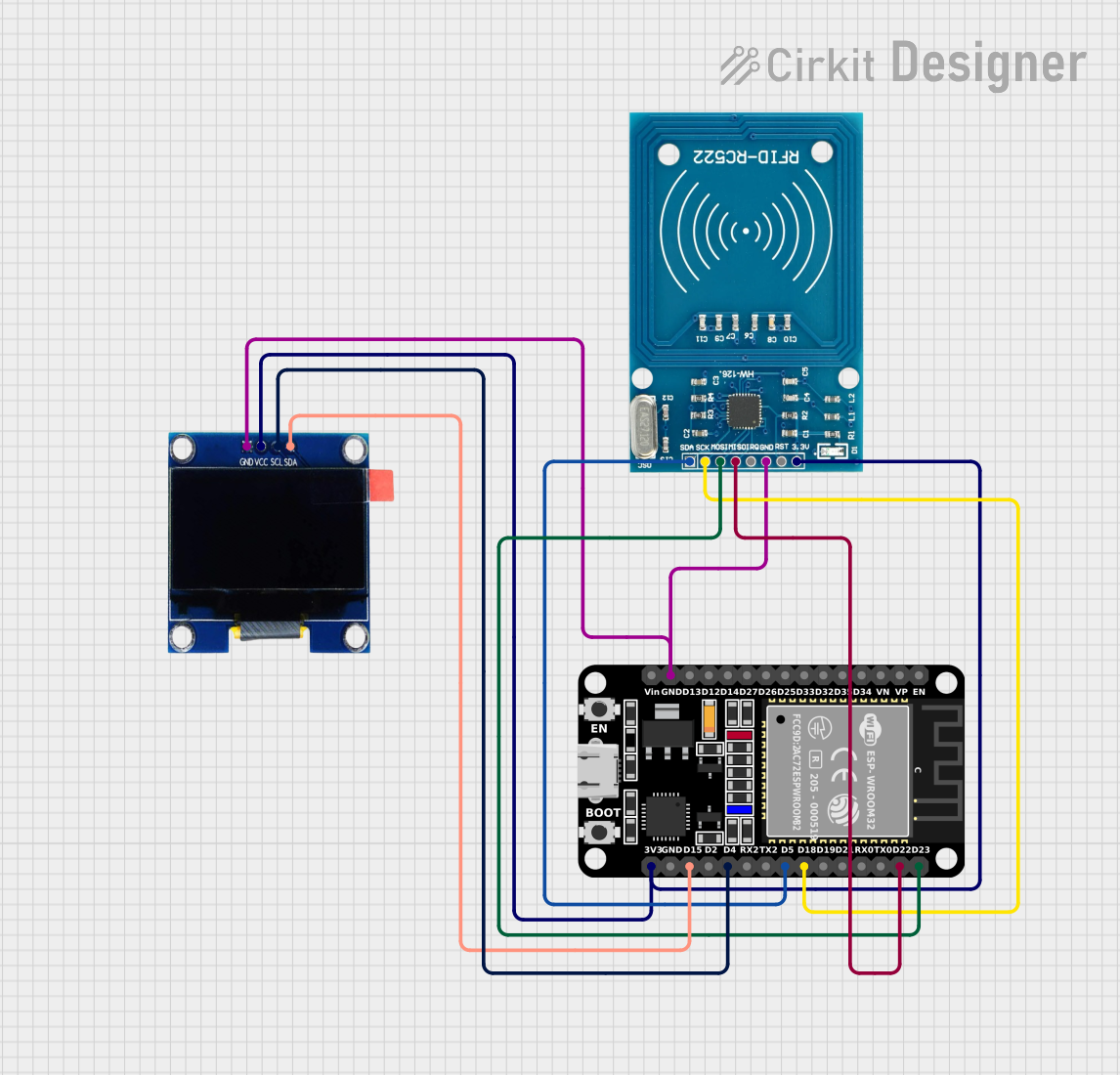
 Open Project in Cirkit Designer
Open Project in Cirkit DesignerExplore Projects Built with SD-CARD-READER-2PINS

 Open Project in Cirkit Designer
Open Project in Cirkit Designer
 Open Project in Cirkit Designer
Open Project in Cirkit Designer
 Open Project in Cirkit Designer
Open Project in Cirkit Designer
 Open Project in Cirkit Designer
Open Project in Cirkit DesignerTechnical Specifications
Key Technical Details
- Supported SD Card Types: Standard SD, SDHC
- Interface: 2-pin SPI (Serial Peripheral Interface)
- Operating Voltage: 3.3V
- Logic Level: 3.3V (5V tolerant with level shifter)
- Data Transfer Speed: Dependent on SD card specifications
- Dimensions: Varies by manufacturer
Pin Configuration and Descriptions
| Pin Name | Description |
|---|---|
| CS | Chip Select (Active Low) |
| SCK | Serial Clock |
| MOSI | Master Out Slave In (Data to SD card) |
| MISO | Master In Slave Out (Data from SD card) |
| VCC | Supply Voltage (3.3V) |
| GND | Ground |
Note: The 2-pin designation refers to the primary communication pins (CS, SCK), not the total pin count.
Usage Instructions
Interfacing with a Circuit
- Power Connections: Connect the VCC pin to a 3.3V power supply and the GND pin to the ground.
- SPI Connections: Connect the CS, SCK, MOSI, and MISO pins to the corresponding SPI interface pins on your microcontroller.
- Level Shifting: If interfacing with a 5V microcontroller, use a level shifter to protect the SD card reader.
Best Practices
- Use a regulated 3.3V power supply to prevent damage to the SD card and reader.
- Format the SD card to the appropriate file system (usually FAT32) before use.
- Ensure proper ESD precautions when handling the SD card and reader.
- Disconnect power before inserting or removing the SD card.
Example Code for Arduino UNO
#include <SPI.h>
#include <SD.h>
// Pin configuration
const int chipSelect = 10; // Change as per your CS pin connection
void setup() {
Serial.begin(9600);
while (!Serial) {
; // Wait for serial port to connect.
}
Serial.print("Initializing SD card...");
// Ensure the chip select pin is set as an output
pinMode(chipSelect, OUTPUT);
// Check for the presence of the SD card
if (!SD.begin(chipSelect)) {
Serial.println("Card failed, or not present");
// Don't continue if the initialization fails
while (1);
}
Serial.println("Card initialized.");
}
void loop() {
// Main code to read and write to the SD card goes here
}
Note: The above code initializes the SD card and checks for its presence. It serves as a starting point for further read/write operations.
Troubleshooting and FAQs
Common Issues
- Card Not Detected: Ensure the card is inserted correctly and the pins are properly connected.
- Read/Write Errors: Check if the SD card is formatted correctly and not locked.
- Corrupted Data: Use a lower SPI clock speed to improve stability.
Solutions and Tips
- Power Supply: Verify that the power supply is stable and at the correct voltage.
- Connections: Double-check all wiring, especially the SPI connections.
- Code Debugging: Add serial print statements to debug the code step by step.
FAQs
Q: Can I use this SD card reader with a 5V system? A: Yes, but you must use a level shifter to convert the 5V signals to 3.3V to avoid damaging the SD card reader.
Q: What is the maximum size of SD card supported? A: It typically supports up to 32GB SDHC cards, but this can vary based on the reader's firmware.
Q: How do I format the SD card for use with the reader? A: You can format the SD card to FAT32 using a computer before inserting it into the reader.
Q: Can I hot-swap the SD card while the power is on? A: It is not recommended to hot-swap the SD card as it can lead to data corruption or hardware damage. Always power down the system before inserting or removing the card.